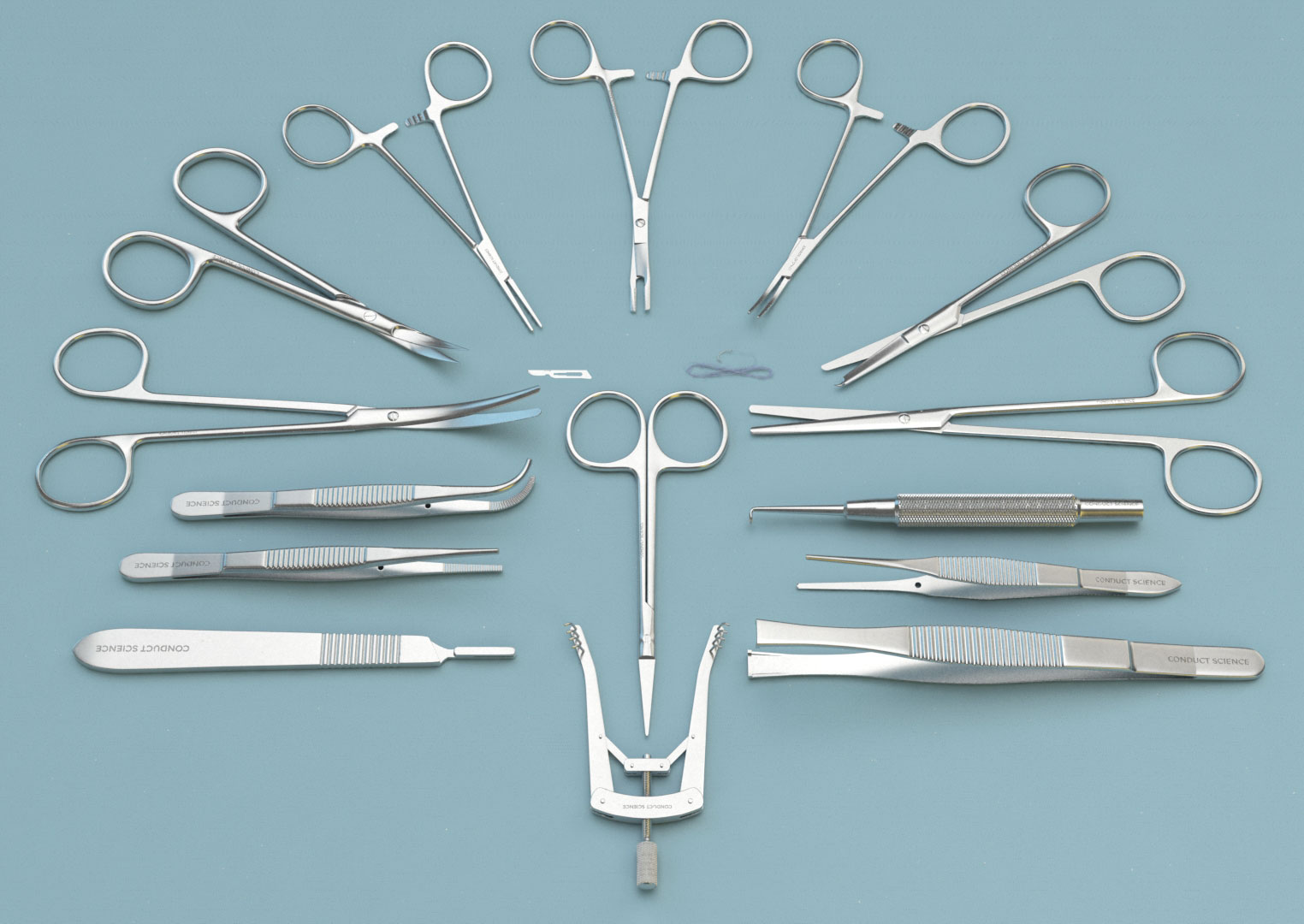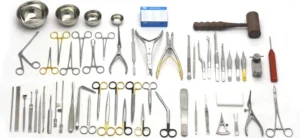How to Select the Right Surgical Instruments for Success

Introduction: Understanding Surgical Instruments
In the medical field, precision is paramount. Surgical instruments are the backbone of this precision, enabling doctors to carry out life-saving procedures with accuracy and efficiency. Whether you are a medical professional, a surgical instruments company, or a patient, understanding the essential surgical tools is key to achieving optimal results in surgery.
This article will explore the different types of surgical instruments, the materials used to manufacture them, and why selecting the right surgical instruments company is critical for both practitioners and patients. You will also gain insights into the technological advancements and quality standards that ensure surgical instruments meet the rigorous demands of the healthcare industry.
1. The Role of Surgical Instruments in Healthcare
Surgical instruments are not just tools; they are integral to the success of surgical procedures. These instruments range from simple scalpels to complex robotic surgical systems, each designed for specific functions within the human body.
Key Functions of Surgical Instruments
Surgical instruments are used for cutting, dissecting, suturing, and other critical procedures. These tools help the surgeon perform tasks such as incising tissue, securing blood vessels, and removing tumors, ensuring that the operation is completed with minimal risk to the patient. Precision, durability, and functionality are the cornerstones of any surgical tool.
How Surgical Instruments Impact Surgery Success
The performance of a surgical instrument can directly affect the outcome of a procedure. For example, a poorly made scalpel can result in improper incisions, leading to complications such as bleeding or tissue damage. High-quality surgical instruments, on the other hand, provide better control, reduce the risk of infection, and increase the likelihood of a successful operation.
2. Different Types of Surgical Instruments
Surgical instruments are categorized based on their function, and there are numerous tools in each category. Understanding the differences is key for selecting the right instruments for each procedure.
General Surgery Instruments
General surgery instruments are used in a wide range of common surgeries. These include scalpels, forceps, scissors, needle holders, and retractors. These tools are essential for performing basic surgical procedures and are the backbone of every operating room.
Specialty Surgical Tools
For specialized surgeries, different instruments are required. Tools like laparoscopes for minimally invasive procedures or heart-lung machines for cardiothoracic surgeries are some examples of how instruments vary across specialties.
Handheld vs. Powered Surgical Instruments
Handheld instruments are typically manually operated by the surgeon, such as forceps or scissors, while powered instruments, such as electric drills and robotic arms, are used for more complex or precise tasks. The choice of instrument often depends on the complexity of the surgery and the precision required.
3. Choosing the Right Surgical Instruments for Procedures
Selecting the right tools is crucial in surgical practice. Several factors need to be considered when choosing surgical instruments, including the complexity of the procedure, the material of the instrument, and the manufacturer’s reputation for quality.
Factors to Consider When Choosing Surgical Tools
- Material Quality: High-quality materials like stainless steel provide durability and precision.
- Sterilization: Tools must be easy to sterilize to avoid infection.
- Ergonomics: Surgical instruments must be comfortable for the surgeon to handle for extended periods.
Ensuring Precision and Durability
The durability and precision of surgical instruments play a critical role in the success of an operation. For example, stainless steel instruments resist corrosion and can withstand sterilization processes while maintaining sharpness and functionality.
4. The Stainless Steel Advantage in Surgical Instruments
Stainless steel has long been the material of choice for surgical instruments. This section will explain why it is preferred and how it benefits both patients and surgeons.
Why Stainless Steel is the Preferred Material
Stainless steel is known for its resistance to rust and corrosion, which makes it ideal for surgical instruments. It is strong, durable, and maintains its integrity even after repeated sterilization cycles.
Benefits of Stainless Steel Surgical Instruments
- Corrosion Resistance: Stainless steel is resistant to oxidation, ensuring the longevity of the instruments.
- Strength and Flexibility: It provides the strength needed to perform precise surgeries while maintaining flexibility for use in various procedures.
5. The Evolution of Surgical Instruments
The development of surgical instruments has come a long way since ancient times. From rudimentary tools made from bone and stone to highly advanced, precision-engineered tools, the evolution of surgical instruments is fascinating.
Historical Development of Surgical Tools
In early surgery, instruments were primitive, with many early tools made from basic materials like wood and bone. Over time, materials improved, and the precision of instruments increased.
Advancements in Surgical Instrument Technology
The last century has seen remarkable advancements in surgical instruments, including the advent of minimally invasive surgery, robotic systems, and 3D printing for custom instruments.

6. Leading Surgical Instruments Manufacturers
Choosing a reputable surgical instruments manufacturer is vital to ensure high-quality, reliable tools. This section highlights some of the leading manufacturers in the industry.
Overview of Top Surgical Instruments Companies
The world’s leading surgical instruments companies, such as Medtronic, Johnson & Johnson, and B. Braun, are known for their innovation, reliability, and high-quality standards in surgical instrument production.
Key Players in Surgical Instruments Manufacturing
These manufacturers provide a wide range of tools, including both general and specialty instruments. By ensuring that their products meet rigorous quality standards, these companies maintain trust with healthcare professionals worldwide.
7. Surgical Instrument Suppliers and Distributors
Surgical instrument suppliers play a crucial role in getting these tools into the hands of surgeons. Healthcare providers need to work with reliable suppliers that offer high-quality products and meet regulatory standards.
What Makes a Reliable Surgical Instruments Supplier?
Reputation, product quality, and customer service are key factors when choosing a supplier. A trusted supplier will ensure that all instruments meet the necessary health and safety standards and can be relied upon in critical moments.
The Importance of Choosing Certified Suppliers
Certified suppliers comply with international standards like ISO 13485, ensuring that their products are safe for use in surgeries. This certification helps guarantee that the surgical instruments are manufactured to the highest standards.
8. The Role of Quality Control in Surgical Instrument Production
The quality control processes involved in surgical instrument manufacturing are critical. These processes ensure that every instrument meets stringent performance standards before reaching the operating room.
Regulatory Standards for Surgical Tools
Regulatory bodies, such as the FDA in the United States and the CE in Europe, establish strict guidelines for surgical instrument production. These standards ensure that surgical tools meet safety, effectiveness, and quality criteria.
How Quality Control Impacts Surgical Instrument Effectiveness
Well-executed quality control ensures that surgical instruments are safe, effective, and reliable, ultimately improving surgical outcomes and patient safety.
9. The Importance of Sterilization in Surgical Instruments
Sterilization is crucial to preventing infection during surgery. This section discusses the best practices for sterilizing surgical tools and the consequences of improper sterilization.
Best Practices for Sterilizing Surgical Tools
Autoclaving, a high-pressure steam method, is the most common sterilization technique for surgical instruments. It ensures the complete removal of pathogens that may otherwise cause infections.
Consequences of Improper Sterilization
Improper sterilization can lead to the spread of infections, resulting in complications that could severely affect patient health. Ensuring that instruments are correctly sterilized is an essential responsibility for healthcare providers.
Explore more latest details about the Popular Materials for Diwan Beds
10. The Future of Surgical Instruments
The future of surgical instruments is driven by innovation. Emerging trends, such as robotic surgery and 3D printing, are changing how surgical instruments are designed and used.
Emerging Trends and Innovations
- Robotic Surgery: Robots are increasingly used in surgery, offering greater precision and control.
- 3D Printing: Surgeons can now use 3D printing to create custom instruments tailored to the needs of individual patients.
How Robotic Surgery is Shaping Instrument Design
Robotic systems like the Da Vinci Surgical System are revolutionizing surgery by offering greater precision. These systems require specialized instruments, designed to be used in robotic arms, providing higher precision and reduced human error.
11. Pros and Cons of Different Surgical Instruments
Understanding the pros and cons of various surgical tools is essential when selecting the best equipment for each procedure.
Handheld vs. Powered Instruments
Handheld instruments are cost-effective but may require more effort from the surgeon. Powered instruments, on the other hand, offer precision but come at a higher cost and require specialized training.
Cost vs. Quality in Surgical Tools
The cost of surgical instruments is often a balancing act between quality and budget. High-quality tools typically offer better performance but can be more expensive, making it important for healthcare providers to prioritize quality without exceeding budgets.
12. Frequently Asked Questions (FAQs)
- What are the most commonly used surgical instruments?
- Common tools include scalpels, scissors, forceps, and needle holders.
- How can I choose the right surgical instrument for my procedure?
- Consider factors like the type of surgery, material, and the manufacturer’s reputation.
- Why is stainless steel the preferred material for surgical instruments?
- Stainless steel is durable, resistant to corrosion, and can be easily sterilized, making it ideal for surgical tools.
- What is the role of sterilization in surgical instruments?
- Sterilization prevents infection during surgery by ensuring that instruments are free from harmful bacteria.
- What should I look for in a surgical instruments manufacturer?
- Look for a manufacturer with high-quality products, excellent customer service, and certifications like ISO 13485.
- How does robotic surgery influence surgical instruments?
- Robotic surgery requires highly specialized instruments designed for robotic systems, offering greater precision.
13. Conclusion: The Importance of Choosing the Right Surgical Instruments Company
In conclusion, selecting the right surgical instruments company is crucial for achieving successful surgical outcomes. Quality tools, when combined with skilled professionals, help ensure that surgeries are performed safely and effectively. By choosing reliable manufacturers, ensuring proper sterilization practices, and staying informed about advancements in surgical technology, healthcare providers can deliver the best care possible.
Call to Action:
If you’re looking for high-quality surgical instruments or are interested in learning more about the best surgical tools for your practice, explore reputable surgical instrument companies and suppliers today!



